Myofascial Release Class highlights
Myofascial Release Class highlights






Myofascial Release Class Highlights
Myofascial release is an advanced therapeutic approach designed to alleviate pain, tension, and immobility by focusing on the body’s fascia—the connective tissue that surrounds muscles, organs, and nerves. If you’re looking to enhance your wellness routine or develop your therapeutic skills, myofascial release classes offer invaluable techniques that can improve overall health and well-being. In this detailed guide, we’ll cover the importance of myofascial release, how the classes work, and how you can benefit from learning this powerful technique.
Understanding Myofascial Release Therapy
What is Myofascial Release?
Myofascial release is a form of manual therapy that focuses on releasing restrictions in the myofascial tissues. Fascia is a web-like connective tissue that runs throughout your body, surrounding muscles, bones, organs, and nerves. When this tissue becomes tight due to injury, stress, or repetitive use, it can cause chronic pain, reduced mobility, and dysfunction. Myofascial release therapy uses hands-on techniques to stretch and loosen the fascia, relieving pain and improving movement.
Why is Fascia Important?
Fascia plays a key role in maintaining the structural integrity of the body. It connects different parts of the body, providing support and stability. When fascia becomes tight or restricted, it can result in pain or discomfort in various areas, even far from the original site of restriction. This can lead to chronic pain conditions, such as fibromyalgia, tension headaches, and other musculoskeletal issues. Releasing the tension in fascia allows for improved mobility, flexibility, and pain relief.
Benefits of Myofascial Release Therapy
Taking a myofascial release class offers a wealth of benefits, both for practitioners and individuals seeking self-care strategies. Whether you are looking to add this technique to your professional repertoire or practice it for personal health, here are some key advantages:
1. Pain Reduction: One of the most significant benefits of myofascial release is its ability to reduce chronic pain. By releasing tension in the fascia, the technique can alleviate pain in the neck, back, shoulders, and other areas. It’s particularly effective for people suffering from long-term conditions such as fibromyalgia, chronic fatigue syndrome, and plantar fasciitis.
2. Improved Mobility and Flexibility: Myofascial release helps loosen tight fascia, increasing flexibility and range of motion. This makes it ideal for athletes or individuals recovering from injuries, as well as those dealing with stiffness due to aging or inactivity. Many practitioners report improved posture and reduced stiffness after integrating these techniques into their routine.
3. Holistic Healing: Rather than focusing solely on individual muscles or joints, myofascial release takes a holistic approach to healing the entire body. This ensures that areas of referred pain are addressed, promoting overall balance and well-being. It can also improve circulation, aiding in tissue repair and reducing inflammation.
4. Stress Relief and Relaxation: Because fascia is interconnected with the nervous system, releasing restrictions in fascia can help reduce tension and stress. Myofascial release promotes deep relaxation, improving emotional well-being and lowering stress levels. For many people, it can also help reduce the frequency and intensity of migraines and tension headaches.
5. Enhanced Body Awareness: Practicing myofascial release increases your awareness of your body and its movement patterns. This improved awareness allows individuals to identify areas of tension and restriction, leading to more mindful movement and self-care.
Who Can Benefit from Myofascial Release Classes?
Myofascial release classes are ideal for a wide variety of individuals. Whether you’re a healthcare professional, a fitness enthusiast, or someone simply looking to improve your own health, learning this technique can be extremely beneficial.
For Massage Therapists and Bodyworkers: Massage therapists, physical therapists, and other bodywork professionals can greatly enhance their practice by integrating myofascial release techniques. Adding these skills enables them to address deeper restrictions that traditional massage may not target, offering more comprehensive treatment to clients suffering from chronic pain and mobility issues.
For Fitness Trainers and Coaches: Personal trainers, yoga instructors, and fitness coaches can use myofascial release techniques to help their clients improve flexibility, recover from injuries, and prevent overuse injuries. By understanding how fascia impacts movement, trainers can design more effective exercise programs.
For Individuals Seeking Self-Care: Even if you’re not a professional therapist, learning myofascial release for self-care can have a significant impact on your well-being. The techniques can be used at home to relieve tension after a workout, reduce stress, or alleviate everyday aches and pains. It’s an excellent tool for anyone seeking natural, non-invasive ways to improve health and mobility.
What to Expect in a Myofascial Release Class
A Myofascial Release Class will typically cover a range of topics and techniques designed to help students understand how fascia works and how to effectively release tension in this tissue. Here are some common highlights of what you might experience during a class:
1. Anatomy of Fascia: The class begins with an overview of the structure and function of fascia, helping students understand the key areas where tension commonly builds. Understanding fascia anatomy is crucial for applying the right amount of pressure and recognizing areas of restriction.
2. Hands-on Techniques: Students will learn hands-on myofascial release techniques that involve slow, sustained pressure on specific areas of the body. These techniques can be applied using hands, elbows, or even tools, depending on the area being treated. Emphasis is placed on proper body mechanics to ensure effectiveness while preventing strain on the practitioner.
3. Self-Myofascial Release: In addition to learning techniques for others, the class will often include methods for self-myofascial release. Students will be taught how to use foam rollers, tennis balls, and other tools to release tension in their own fascia, making it an effective self-care strategy for daily use.
4. Case Studies and Applications: Myofascial release classes often include case studies, where students can see real-world applications of the technique. Whether it’s addressing chronic pain, injuries, or specific medical conditions, case studies help students understand how to apply myofascial release in different scenarios.
5. Guided Practice and Feedback: Students will have the opportunity to practice on one another under the guidance of an experienced instructor. This hands-on experience ensures that students can feel confident in their ability to perform the techniques accurately and safely. Instructors provide feedback and corrections to improve technique and ensure proper application.
Common Conditions Addressed by Myofascial Release
Myofascial release therapy can be highly effective in addressing a wide range of physical conditions, including:
- Chronic Back Pain: Myofascial release helps alleviate chronic back pain by releasing deep tension in the fascia around the spine and surrounding muscles.
- Sciatica: For individuals suffering from sciatica, myofascial release can target the fascia around the lower back and hips, easing compression on the sciatic nerve.
- Plantar Fasciitis: This condition, caused by tightness in the fascia of the feet, can be significantly improved with targeted myofascial release techniques.
- Carpal Tunnel Syndrome: Myofascial release around the wrist and forearm can help alleviate symptoms of carpal tunnel syndrome, reducing numbness and pain.
- Headaches and Migraines: Tension in the fascia around the neck and head can contribute to headaches and migraines. Releasing this tension can reduce the frequency and severity of headaches.
The Science Behind Myofascial Release
Myofascial release has gained popularity due to its scientific backing. Research shows that restrictions in fascia can contribute to chronic pain, stiffness, and decreased range of motion. The fascia contains mechanoreceptors that communicate with the nervous system, making it integral to pain sensation and mobility. Studies have demonstrated that manual release techniques can increase blood flow, reduce inflammation, and encourage healing in tissues affected by fascia restrictions.
Neuromuscular Connection: The fascial network is closely connected to the nervous system. By releasing tension in the fascia, myofascial release can calm the nervous system, reducing pain signals and stress levels.
Tissue Hydration and Elasticity: Healthy fascia allows for smooth movement and flexibility. Over time, restricted fascia becomes dehydrated and less elastic, leading to stiffness. Myofascial release helps restore hydration and elasticity, allowing the tissues to glide smoothly over each other and increasing mobility.
How to Continue Your Myofascial Release Journey
If you’re interested in learning more or want to advance your skills, many myofascial release classes offer advanced training modules. These may include specialized courses on treating specific conditions, mastering more advanced techniques, or incorporating other modalities like craniosacral therapy or trigger point therapy.
By continuing your education in myofascial release, you can deepen your understanding of how the body works and provide even more effective treatments for yourself or your clients.
Conclusion: Empower Yourself with Myofascial Release
Whether you’re a practitioner looking to expand your skillset or an individual seeking better self-care strategies, taking a myofascial release class can transform your approach to wellness. With its ability to reduce pain, improve mobility, and promote relaxation, myofascial release is an invaluable tool in achieving better health. Learn the techniques, experience the benefits, and share the power of myofascial release with others.
By attending a myofascial release class, you empower yourself with the knowledge and techniques to improve your body’s performance and health. Whether for personal use or as part of a professional practice, mastering these techniques can lead to a better quality of life and greater care for others. With its ability to reduce pain, improve mobility, and promote relaxation, myofascial release is an invaluable tool in achieving better health. Learn the techniques, experience the benefits, and share the power of myofascial release with others.
By attending a myofascial release class, you empower yourself with the knowledge and techniques to improve your body’s performance and health.


